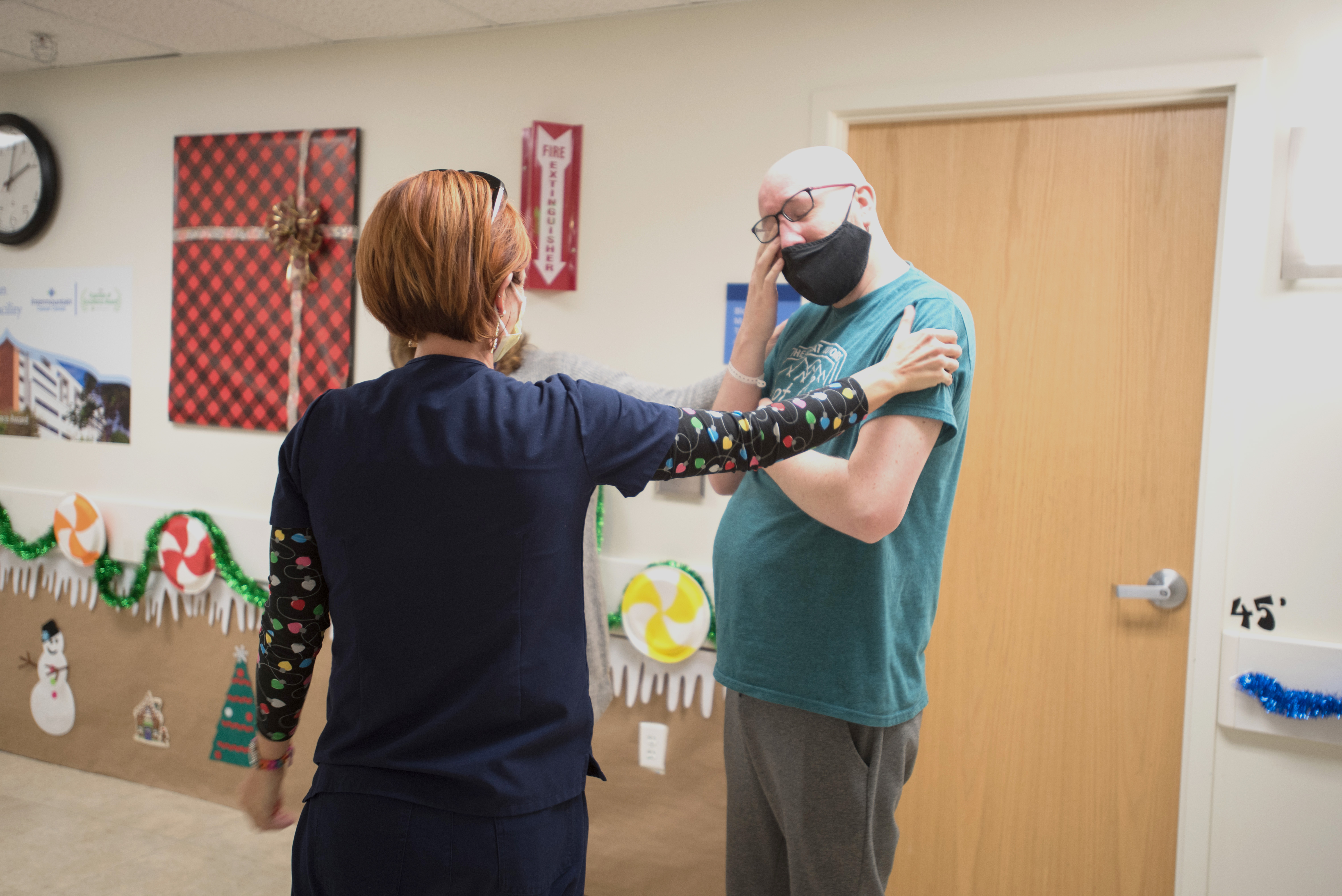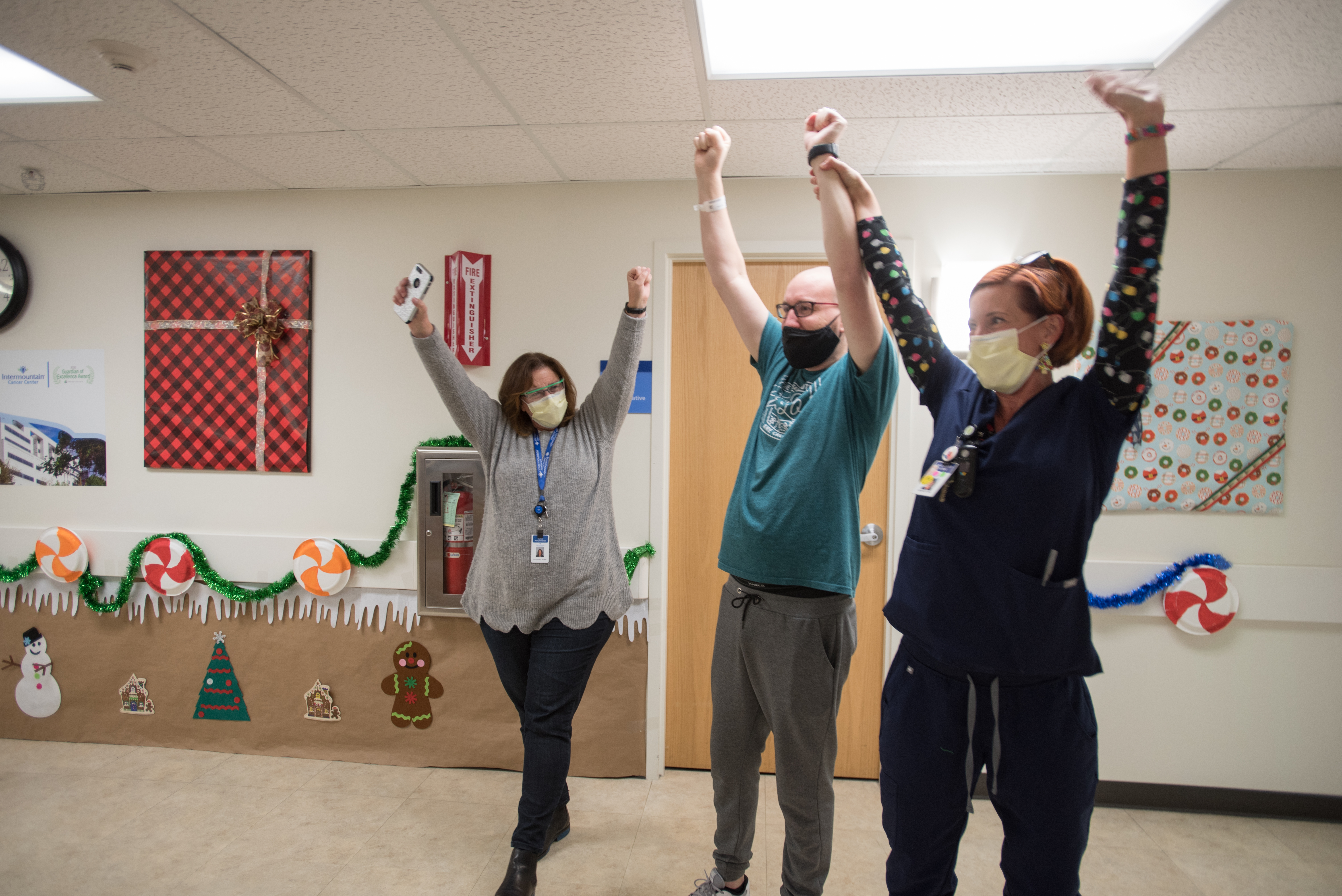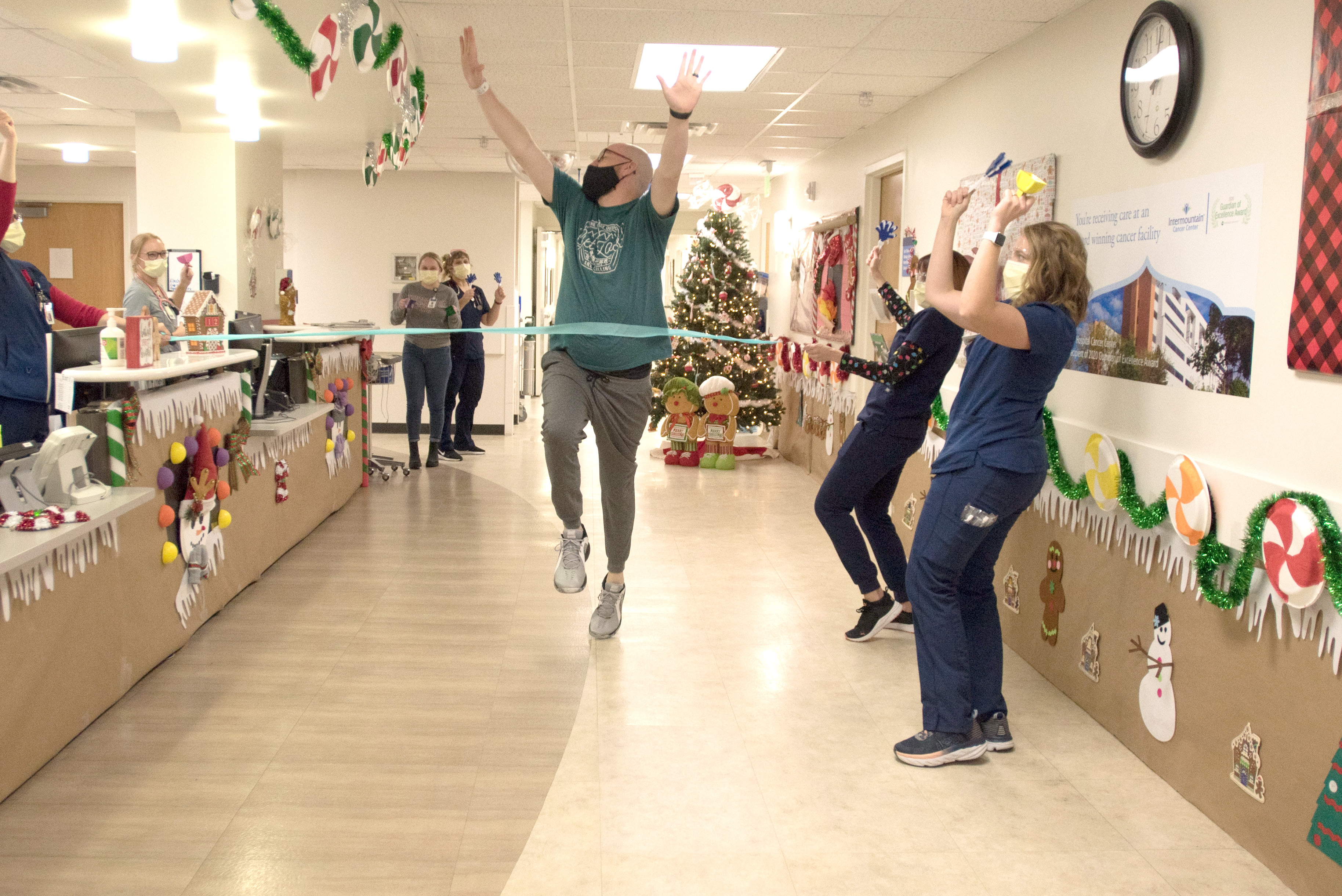Wes Pace, a 36-year-old cancer survivor from Utah, is living proof that there is always something to celebrate, and we can overcome a difficult year with the support of those around us — no matter what comes our way.
Pace and his family had some exciting plans for 2020. They had just purchased their first home in Lehi. However, just a few days after moving in, Pace started feeling sick. Thinking he had COVID, he got tested and decided to ride out the symptoms at home while he waited for his test results.
After receiving a negative result, he continued to get sicker. As his condition worsened over the next week, Pace, a type 1 diabetic with asthma, knew he needed to seek additional medical care. On Thursday, July 16, he scheduled a video visit with his primary care provider, Michael Gomez, PA-C,
After learning of his worsening symptoms, Gomez told Pace he needed to go to the ER immediately.
“My father-in-law dropped me off at the ER at Intermountain Medical Center in Murray, and I geared up for a few hours there,” said Pace. “I figured it would be a quick visit — they’d tell me I had COVID, and then they’d send me home.”
However, after running several tests, the doctors delivered the bad news: Pace didn’t have COVID-19, he had Acute Myeloid Leukemia (AML).
“My head just started spinning when they told me,” said Pace. “Initially, I just kept thinking ‘this can’t be right.’”


